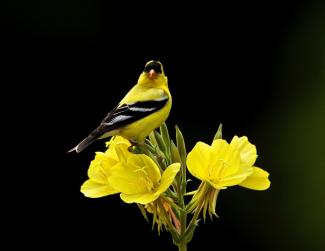
Garden Birds of Portland
There are more than 9,300 species of birds distributed over the earth; over 400 species spend at least part of their lives in Oregon. According to the Audubon Society, over 200 species live or move through the Portland area over the course of a year. The fluctuations in numbers and species over the year is due to migration (regular, seasonal journeys). Bird abundance and number of different species have been used as indicators of urban biodiversity quality because birds are so prominent in food webs. Most birds rely on arthropods for at least part of their diet throughout the year, eating spiders, beetles, ants, and insect larvae. Besides eating a variety of insect prey, they help pollinate plants, spread seeds, and provide other ecosystem services. By coming into our gardens, they bring a bit of the wild world into the city. Observing birds helps us appreciate the natural world.
Join us in collecting bird data for the purposes of studying ecological trends. “Point counts” are often used by ornithologists and birders like you to study bird populations. The observer stands at a set point or observation post and records the number and type of birds seen within a given area. The data is then used to estimate relative abundance and population trends of particular bird species. By conducting a point count in your yard weekly, or at least once a month, for the year, you will notice fluctuations in the number and species of birds seen. Monitoring during the spring and summer, along with collecting insects, will help provide information about local food webs and how gardens might support biodiversity.
First, it's good to review the species you are likely to encounter. There is considerable variety of habitat preference for native birds; some birds prefer tall older trees while others prefer small shrubs. Some eat seeds, some eat insects, and some eat primarily fruit. There are different birds in Portland yards in winter than in summer. The bird information below contain a brief description, picture, and you can also listen to sound clips of each birds song available at www.allaboutbirds.org
Remember that the bird's overall size, shape and color pattern are three important clues to its identity. The bird's habitat and behavior are also important clues.
Click here for methods to monitor birds in the garden over time.